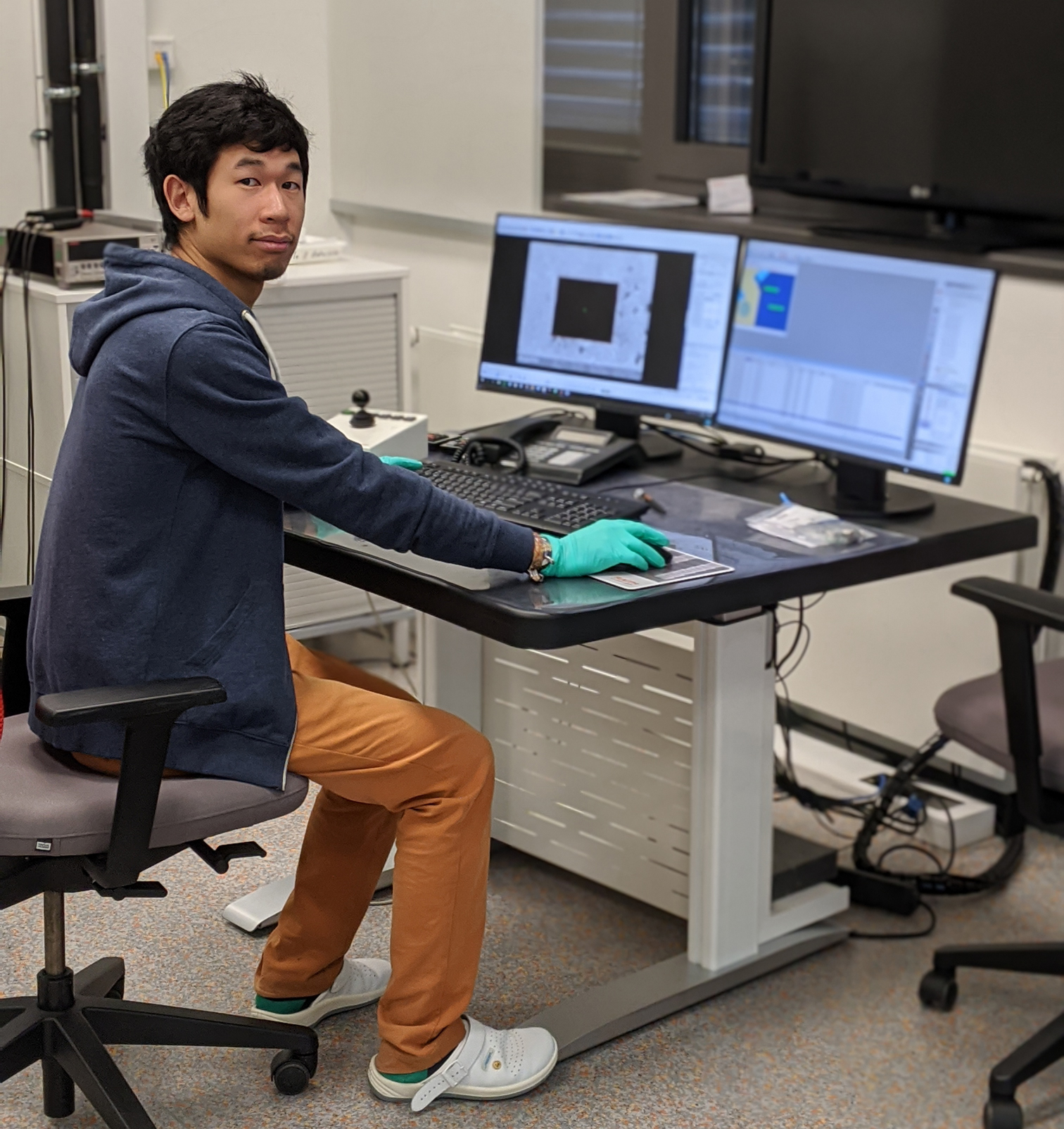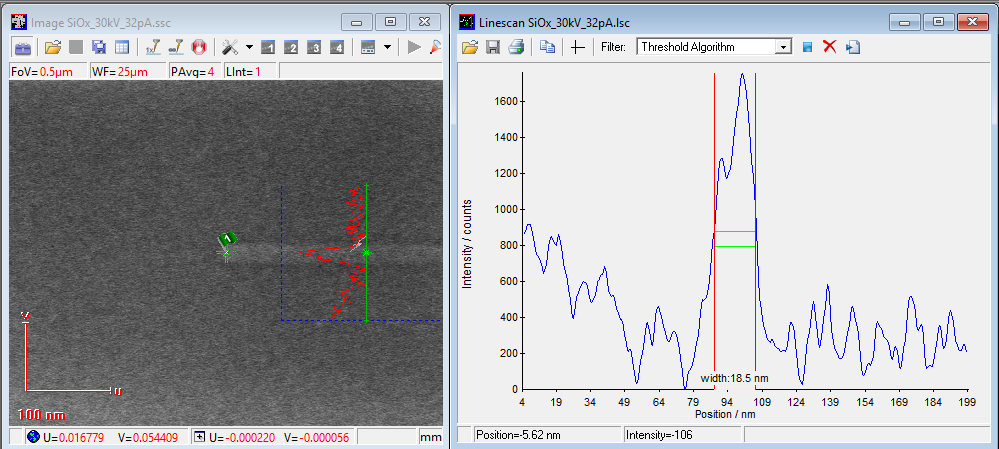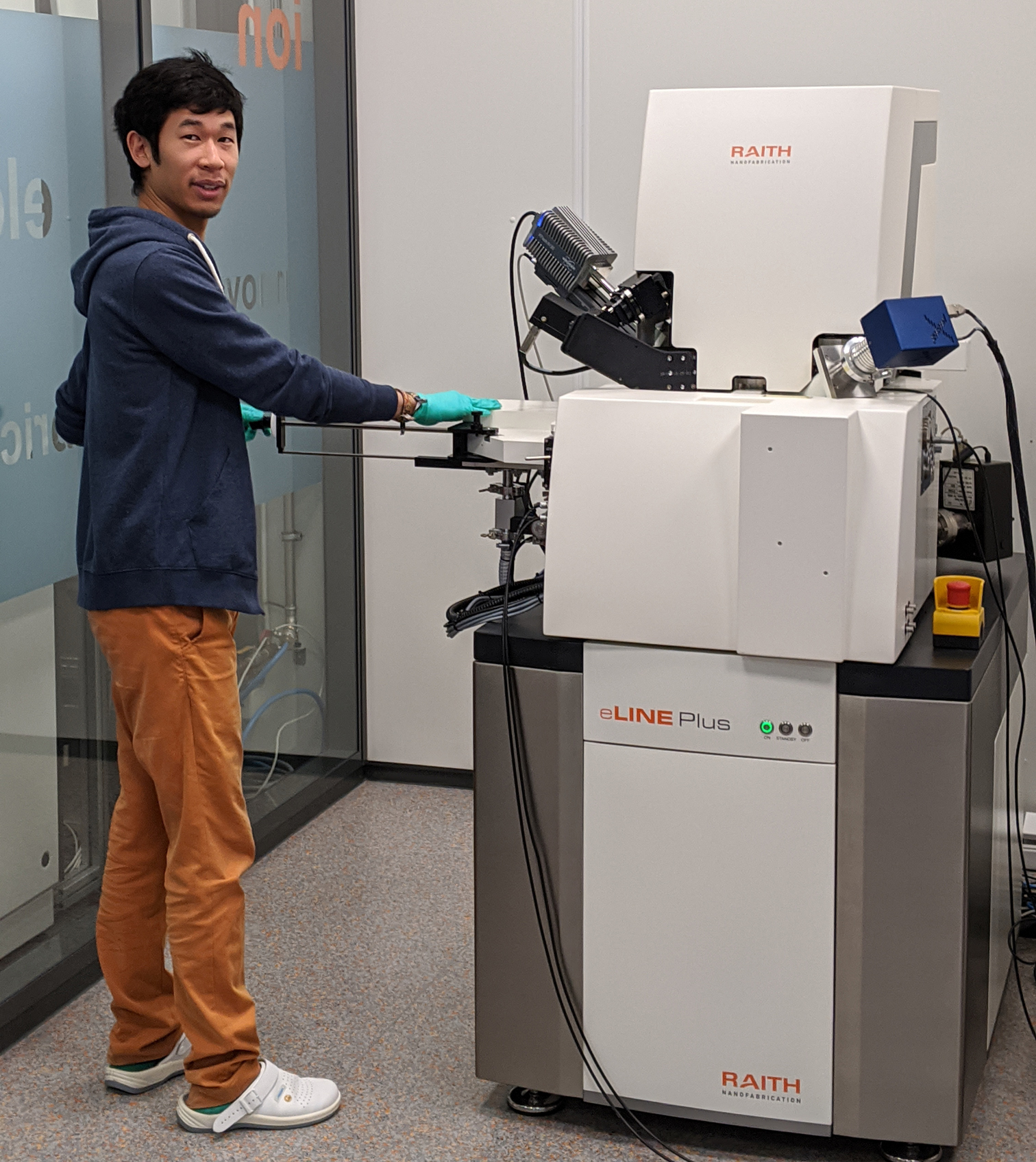Supporting research – Raith is one of the partners at QuESTech
For Raith, supporting young scientists and providing assistance in future research is an important commitment to upcoming generations and to science in general. As part of this commitment Raith is participating in the QuESTech (Quantum Electronics Science Technology training) Program. One of the two companies that are part of the network, Raith is committed to providing young students with challenging state-of-the-art training in the general field of quantum electronics. We talked to Willy Lim, who is one of the participants and works at Raith.
Hello Willy, tell us a little bit about yourself!
My name is Willy Lim and I have been a PhD student on the QuESTech program since September 2018. I am enrolled at the University of Konstanz under the co-supervision of Professor Elke Scheer.
However, Raith is the place where I work full-time under the co-supervision of Dr. Guido Piaszenski and the valuable help of Axel Rudzinksi.

After an internship at the Cavendish Laboratory in the field of nanomagnetism during my bachelor studies, I knew I wanted to learn more about nanoscience. I therefore studied in the field of nanoscience and nanotechnologies and graduated from the University of Grenoble in 2018. After that I wanted to continue with a PhD, but at that stage I did not have any experience in the field of industrial research. I had the aim of combining both aspects during my PhD, but I had also decided to move abroad. Fortunately for me I chanced upon a PhD offer matching all my criteria. I have been living in Germany since 2018 as a PhD student on the QuESTech program.
What is the Questech program?
QuESTech is an Innovative Training Network funded by the European Commission. It is within the Horizon 2020 framework and is part of the Marie Sklodowska-Curie Actions research funding scheme. The network spans seven leading European research laboratories, two high-tech companies including Raith, and four partner organizations. Together they provide us, the 15 ESRs (Early Stage Researchers), with state-of-the-art training in the general field of experimental, applied, and theoretical quantum electronics. On top of our scientific and technological training, special training sessions are provided in the following topics: scientific presentation, IPR, entrepreneurship and start-up business, interpersonal communication at work, scientific article writing, and self-positioning and career planning. Lastly, given the interconnection of our individual projects, we are undertaking systematic secondments in both the academic and private sectors.
What are you working on exactly?
I am working on developing a novel EBID (Electron Beam Induced Deposition) process. EBID is a direct local writing technique using electron beams and a precursor gas to define 2D and 3D nanostructures. This direct-write process has been greatly advanced over the last decade, not only into mask repair, but also into a highly versatile technique for various areas of materials research. Furthermore, I am developing existing EBID recipes for locally deposit insulator (SiOx) with a high spatial resolution range (see picture below). I am also exploring local deposition of different metals which will serve as electrical insulators / conducting electrodes for complex nanoelectrical circuits. This work is done in close collaboration with the ESR of the University of Konstanz for designing single electron transistors. Other ESRs’ projects will also benefit from my work.

What kind of support do you get from Raith?
Raith is supporting me from a technological point of view, mainly with their highly versatile and open electron beam lithography system, the eLINE Plus.
This is the main system I am working with for EBID processes. It offers possibilities to perform not only EBL, but also electron image analysis, EBID, and in-situ electrical measurement, which are great for my project. I can also take advantage of its excellent availability in comparison to the standard availability of such systems in university laboratories. Further characterization processes that are not available in-house are performed at QuESTech partner laboratories. I would also like to add that I really enjoy the working environment at Raith!
